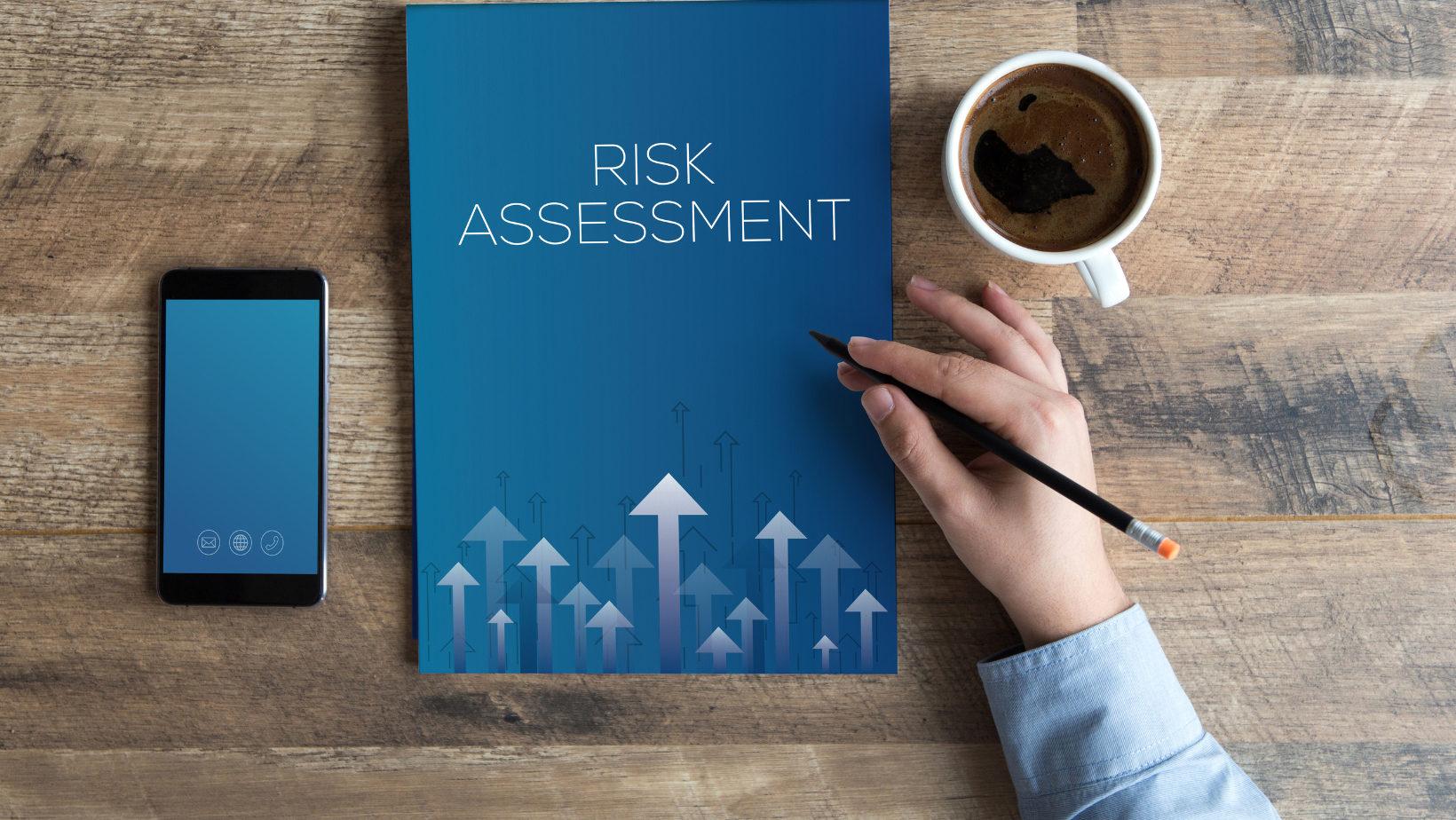How to Conduct a Cyber Security Risk Assessment

Cyber security is a hot topic in today’s digital age and for good reasons. With the ever-increasing number of cyber-attacks and data breaches, it has become crucial for businesses and organizations to protect their sensitive information from potential threats. One of the key steps in securing your digital assets is conducting a comprehensive cyber security risk assessment.
This process involves identifying potential risks and vulnerabilities in your systems, analyzing their potential impact, and implementing necessary measures to mitigate them. In this article, we will discuss the importance of conducting a cyber security risk assessment, as well as provide you with practical tips on how to conduct one effectively. Keep reading to learn how you can safeguard your business against cyber threats.
What Is a Cyber Security Risk Assesment?
A cybersecurity risk assessment is a pivotal piece in the jigsaw puzzle of organizational security. It’s no less than a detailed, methodical evaluation of your system’s vulnerabilities, potential threats from mischievous hackers, and the disastrous consequences that might follow if these elements were to conspire against your cybersecurity defenses. Think of it as a routine medical check-up but for your digital health. Just as you’d want to identify any health risks before they manifest into more serious conditions, a risk assessment helps you to spot weak points in your cyber security architecture before they are exploited, leading to data breaches.
The process goes beyond a simple identification of risks. It is a comprehensive exercise that involves ranking these risks based on their likelihood and potential impact. It also entails strategically formulating a robust defense mechanism to mitigate them. By conducting a Cyber Security Risk Assessment, you are not just reacting to threats but proactively strategizing to ensure the protection of your organization’s valuable digital assets against the relentless onslaught of cyber-attacks. This approach keeps you one step ahead of troublemakers in the cyber world.

The Role and Benefits of Conducting a Cyber Security Risk Assessment
Conducting a Cyber Security Risk Assessment brings numerous benefits to your organization, both in the short and long term. From identifying potential threats to creating an action plan for mitigating them, here are some of the key roles and benefits you get when you perform a cybersecurity risk assessment:
Identify Potential Risks
One of the primary roles of conducting a Cyber Security Risk Assessment is to identify potential risks that can threaten your organization’s digital assets. This process goes beyond just identifying obvious vulnerabilities and takes a deep dive into all possible scenarios that could lead to a data breach. For example, imagine your company stores sensitive customer information such as credit card numbers and personal details on its servers.
A risk assessment would not only identify external threats like malware or hacking attempts but also internal risks such as employee negligence or unauthorized access by disgruntled employees. By thoroughly assessing and identifying these potential risks, you can take proactive steps to mitigate them before they become a cyber-attack. So, it’s essential to conduct regular risk assessments to stay one step ahead of cyber threats and safeguard your organization’s valuable data.
Developing a Comprehensive Defense Strategy
A Cyber Security Risk Assessment goes beyond identifying risks and their potential impact. It also helps you to develop a comprehensive defense strategy to mitigate these risks effectively. This can include implementing security measures like firewalls, encryption, and multi-factor authentication, as well as creating procedures for regular data backups and employee training on cyber security best practices.
If the risk assessment identifies weak passwords as a potential vulnerability in your organization’s systems, you can implement stronger password requirements and provide employees with training on how to create secure passwords. By taking proactive steps based on the results of the risk assessment, you can strengthen your overall defense against cyber threats.
Prioritize Risks
Prioritizing risks is an essential aspect of conducting a Cyber Security Risk Assessment. Not all risks are created equal, and some may have a more significant impact on your organization’s digital assets than others. By ranking the identified risks based on their likelihood and potential impact, you can focus your resources and efforts on mitigating the most critical threats first.
If the cyber risk assessment reveals that a specific software vulnerability has a high likelihood of being exploited and can result in a significant data breach, you can prioritize fixing this vulnerability immediately rather than addressing lower-risk issues first. This targeted approach allows you to allocate your resources effectively and efficiently, ensuring maximum protection for your organization’s valuable data.
Compliance with Regulations
In today’s regulatory landscape, organizations are required to comply with various data protection laws and regulations, such as GDPR and HIPAA. Cybersecurity risk assessments can help your organization identify potential gaps in compliance and take corrective action before facing penalties and fines.
If your risk assessment reveals that your organization is not adequately protecting sensitive customer information, you can strengthen security measures and ensure compliance with data protection regulations. This not only protects your organization from legal consequences but also builds trust with customers who expect their data to be handled securely.
Cost-Efficiency
While conducting a risk assessment may require an initial investment of time and resources, it can save your organization from significant financial losses in the long run. By identifying and mitigating potential risks early on, you can avoid costly data breaches and associated expenses such as forensic investigations, legal fees, and damage control.
In addition, conducting a risk assessment can identify inefficient or redundant security measures that may be costing your organization money without providing adequate protection. By streamlining your defense strategy based on the results of the risk assessment, you can improve cost efficiency while maintaining robust security.
Enhance Business Continuity
A Cyber Security Risk Assessment not only identifies potential risks to your organization’s digital assets but also helps to create an action plan for mitigating these risks effectively. This proactive approach ensures that in case of a cyber-attack or other disaster, your organization has a solid business continuity plan to minimize downtime and maintain operations.
If your risk assessment reveals that a ransomware attack could disrupt your organization’s operations and lead to significant financial losses, you can implement measures like regular data backups and disaster recovery strategies. This ensures your business can quickly recover and continue operating even after a cyber-attack or other disruptive event.
Build Stakeholder Confidence
When you conduct cybersecurity risk assessments, you demonstrate to stakeholders that your organization takes data protection seriously. It shows you are proactive in identifying potential risks and taking steps to mitigate them effectively.
This can enhance stakeholder confidence in your organization’s ability to protect sensitive information, ultimately improving trust and reputation. In the long term, this can also lead to increased business opportunities and a competitive advantage in the market.
Steps to Conducting a Cyber Security Risk Assessment

Now that you understand the importance of a Cyber Security Risk Assessment, here are some steps to help you conduct one effectively:
1. Identify and Prioritize Assets
The first step in conducting cyber risks Assessment is identifying and prioritizing your organization’s digital assets. This can include sensitive data, systems, networks, and applications. By understanding the value and importance of each asset, you can better assess the potential impact of a cyber-attack and prioritize risks accordingly.
If your organization heavily relies on a specific software system for its operations, this may be considered a high-priority asset that requires extra protection against potential vulnerabilities.
3. Identify Potential Threats
Once you have identified and prioritized your assets, the next step is identifying potential threats that could compromise their security. This can include external threats such as hackers or internal threats such as employee negligence.
If your organization deals with sensitive customer data, potential threats could include a cyber-attack aimed at stealing this information or an employee mistakenly sharing confidential data.
4. Assess Vulnerabilities
After identifying potential threats, the next step is to assess any vulnerabilities within your organization’s systems and processes. Vulnerabilities can include outdated software, weak passwords, or lack of encryption. By conducting vulnerability assessments, you can identify weaknesses that potential threats could exploit.
If your organization uses an outdated operating system that is no longer supported with security updates, this presents a vulnerability that hackers could exploit. By addressing this vulnerability through patching or updating the system, you can mitigate the risk of a cyber-attack.
It’s important to conduct regular vulnerability assessments as new cybersecurity risks emerge and technology evolves. This allows you to stay ahead of potential risks and ensure your organization’s digital assets are adequately protected.
3. Rank Risks and Develop Mitigation Strategies
Once you have identified potential threats and vulnerabilities, it’s essential to rank the risks based on their likelihood of occurrence and potential impact. This allows you to prioritize which risks require immediate action.
For high-risk issues, develop mitigation strategies that address both short-term and long-term risk assessment reports. For example, if an outdated software system poses a high risk to your organization’s data security, a short-term goal may be to update or replace the system, while a long-term goal could be implementing regular software updates to prevent future vulnerabilities.
4. Implement Risk Management Plan
The final step in conducting a Cyber Security Risk Assessment is implementing your risk management plan. This involves putting into action the strategies developed in the previous step.
It’s important to regularly review and update your risk management strategy as new threats emerge and technology evolves. This ensures your organization is continuously improving its defense against potential risks.
5. Document the Process
It’s crucial to document the entire risk assessment process. This includes documenting each step taken, any risks identified and mitigated, and any changes made to your organization’s systems and processes.
Documentation not only helps track progress but also serves as a reference for future risk assessments. It allows you to see how your organization’s security has improved over time and identify areas that may require further attention.
Best Practices for Conducting a Cyber Security Risk Assessment

Conducting a Cyber Security Risk Assessment is an ongoing process that requires dedication and continued effort. To ensure the effectiveness of your risk assessment report, here are some of the best practices to keep in mind:
Involve All Stakeholders
Involving all stakeholders in the Cyber Security Risk Assessment process is crucial for its success. This includes not only IT professionals but also employees from other departments, such as finance, legal, and human resources. By involving a diverse group of stakeholders, you can gain different perspectives and expertise to identify potential risks and develop effective mitigation strategies.
For example, if your organization involves its marketing team in the risk analysis process, The marketing team may be able to identify potential cyber threats related to social media accounts used for promoting the company’s brand. They can then work with the IT department to put measures in place to prevent these threats from occurring. In this way, involving all stakeholders can help address blind spots that may have been overlooked otherwise.
Be Proactive
A proactive approach is crucial when conducting a Cyber Security Risk Assessment. This means regularly reviewing and assessing potential risks rather than waiting for an actual cyber-attack to occur. By being proactive, you can identify security risks and address them before potential threats exploit them.
For example, instead of waiting for an employee to fall victim to a phishing scam, you can proactively conduct training sessions and implement security measures to prevent such attacks from occurring in the first place.
Stay Informed
Cybersecurity is constantly evolving, with new threats emerging every day. It’s essential to stay informed about the latest trends and developments in the industry to ensure your risk assessment remains relevant and effective.
This includes staying up-to-date on new technologies, security measures, and best practices. Additionally, keeping track of current cyber-attacks and data breaches in your industry can help identify potential risks specific to your organization.
Prioritize Risks
As mentioned earlier, ranking risks based on their likelihood of occurrence and potential impact is crucial in developing an effective risk management plan. It’s essential to prioritize high-risk threats that could have a severe impact on your organization’s operations or reputation.
If your organization deals with sensitive customer data, a potential data breach would be considered a high-risk threat that should be addressed immediately.
Plan for the Worst-Case Scenario
While no one wants to think about worst-case scenarios, it’s important to plan for them when conducting a Cyber Security Risk Assessment. This means considering potential catastrophic events that could severely impact your organization’s operations or lead to its downfall.
By planning for the worst-case scenario, you can develop strategies to prevent such events from occurring and create a contingency plan should they happen.
Involve External Experts
In addition to involving all stakeholders within your organization, it can also be beneficial to seek external expertise when conducting a Cyber Security Risk Assessment. This could include hiring consultants or working with cybersecurity firms specializing in risk assessment.
External experts can provide unbiased opinions and insights into potential risks that may have been overlooked internally. They can also offer recommendations and best practices based on their experience working with other organizations in similar industries.
Conclusion
Conducting a Cyber Security Risk Assessment is an essential step in ensuring the protection of your organization’s data and systems. It involves identifying potential risks, developing strategies to mitigate them, and continuously monitoring and updating your risk management plan.
By following best practices such as involving all stakeholders, being proactive, staying informed, prioritizing risks, planning for worst-case scenarios, and seeking external expertise, you can conduct a thorough and effective risk assessment that helps safeguard your organization against cyber threats. Remember to document the entire process to track progress and serve as a reference for future assessments. Stay vigilant and regularly review your risk management plan to ensure maximum protection against ever-evolving cyber threats. Happy assessing!

